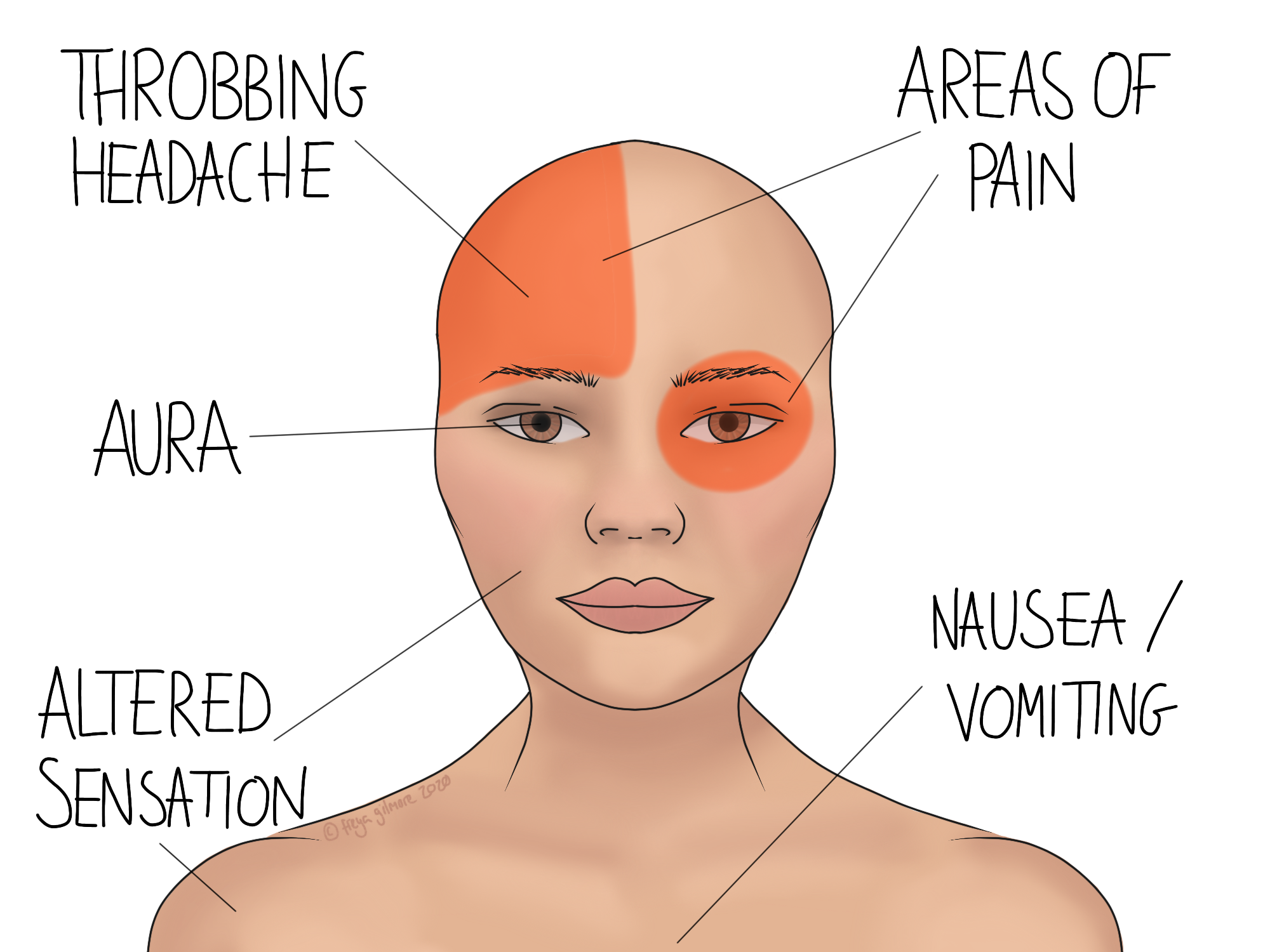Migraine Prevention
Migraines are not just a severe headache- some cases even present with no headache at all.
Migraine Symptoms
Most migraines do come with a headache. Of those that do, they may or may not be associated with an aura. An aura is a collection of symptoms that precede the headache.
Aura
Aura symptoms can include any of the following, usually one after the other with each occurring for 5-60 minutes.
- visual disturbances- often zig zags or flashing light within the field of vision
- sensory changes, such as
- difficulty with speech or language
Aura symptoms completely resolve, with no lingering effects after the migraine passes. If your symptoms do persist, you should contact your GP urgently.
Some people experience an aura quite differently, with symptoms including vertigo, double vision, tinnitus, and more. These may be symptoms of a brainstem migraine, as long as they too are fully reversible within a short period of time.

Headache
The headaches associated with a migraine have a few distinguishing features. They last between four hours and three days, and affect one side of the head per episode. Pain is throbbing, and described as moderate or severe. Even low levels of normal activity aggravate them, such as walking up stairs.
There are medications available on prescription and over the counter to help avoid or minimise the headaches. Medication combined with manual therapy can work quite well, but your osteopath cannot give advice on medication. Your pharmacist is a good place to start if you would like to go down this route.
Triggers and Potential Mechanisms
Identifying triggers for your episodes is a key part of management. Some triggers are unavoidable, such as hormonal shifts throughout the month, or associated with pregnancy or menopause. For an increase in symptoms around menopause, you may like to speak to your GP about HRT. However stress, sleep, and diet can make a big difference. Caffeine and sugar are often cited as potential triggers, and you might find that cutting down or switching to alternatives makes a big difference. If you struggle to spot any patterns, you might benefit from keeping a trigger diary: log your symptoms alongside what you've eaten and drunk. If this shows nothing, you might want to expand to cover your stress levels, sleep, and exercise.
The two potential mechanisms to explain migraine focus on blood vessels and nerves. The blood vessel theory may have stemmed from the throbbing nature of the headache, but studies rarely find a correlation between symptoms and vascular findings. The neurological theory is now more widely accepted, but is still incomplete.
Osteopathy for the Prevention of Migraine
Osteopathy is recognised as a therapy that may be able to help to prevent episodes of migraines. Some studies even show better outcomes for migraine with manual therapy than with medication. Because the mechanism for migraine is not fully explained, treatment approaches vary between patients and practitioners. When we consider the potential link between nerves and symptoms, it might be appropriate to work on the neck and head. Work to ease the demand on the neck, such as ensuring the rest of the upper body is moving well, is a possible approach. Similarly, addressing existing problems in the neck itself might have a significant effect on the migraines.